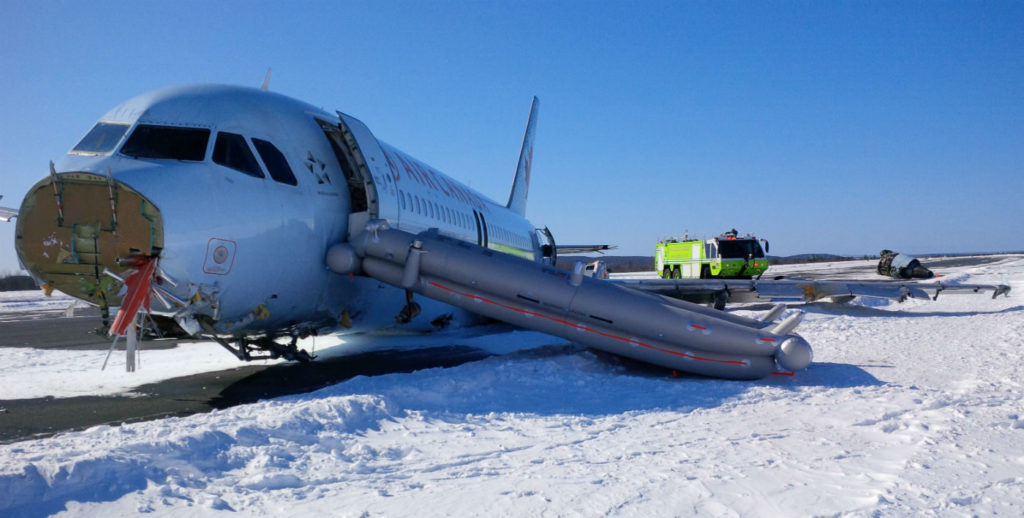Estimated reading time 3 minutes, 39 seconds.
More than two years after an Air Canada Airbus A320-211 crashed while on approach into Halifax International Airport, the Transportation Safety Board of Canada (TSB) has concluded its investigation into the incident and released its final report.

Air Canada Flight 624 struck power lines while on a non-precision approach into Halifax through the stormy early morning darkness on March 29, 2015.
The aircraft–with 138 people on board including crewmembers–impacted the snow-covered ground about 740 feet before the runway threshold and then bounced on the ground twice more before skidding to a stop.
The plane was evacuated and 25 people were taken to hospital. There was no post-crash fire; however, the aircraft was destroyed.
In its report, the TSB identified a list of causes and contributing factors to the accident, including deficiencies in Air Canada’s standard approach procedures, poor visibility due to blowing snow, and runway lighting that was not set at maximum brightness.
According to the report, the flight crew had correctly programmed the autopilot to fly the approach. However, the airline’s standard operating procedures (SOPs) did not require pilots to monitor the altitude and distance from the runway threshold past the final approach fix, or adjust the flight path angle while flying in the automated flight path angle guidance mode.
In the poor winter weather and with runway lighting dimmer than it should have been, there were limited visual cues for the crew. They did not notice that the aircraft had drifted below the planned vertical descent angle flight profile.
Because no emergency was expected, passengers were not in the brace position and most injuries were consistent with being unprepared for impact. A flight attendant was hurt by a coffee brewer that flew out of its mount, while the captain and first officer both sustained head injuries when their shoulder harness locking mechanisms failed to restrain them properly.
Since the accident, Air Canada has amended its approach procedures and has requested that Transport Canada adjust approach minimums for airports based on their available runway lighting.
The airline has also recommended that nine Canadian airports upgrade their approach lighting to improve on the current capabilities of omnidirectional approach lighting systems.
Airbus has revised its aircraft maintenance manual to reflect changes in the testing of pilot seat shoulder harness webbing.
The Halifax International Airport Authority (HIAA) has upgraded its runway lighting and made a number of changes to its emergency response plan, while Nav Canada has clarified lighting panel settings to air traffic controllers and published new approach plates for Halifax International Airport.
Meanwhile, a class action lawsuit filed by passengers on Air Canada Flight 624 continues to make its way through the courts.
The TSB aviation investigation report can be found here.








